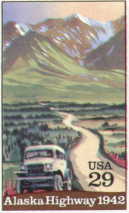
Home
Aviation Stories
"In Memory Of"
Net Sites
Sign Guestbook
View Guestbook
Email Ron
Sell your Trust Deed

Luke Air Force Base Civilian Fly-InBy Ron Kilber
Saturday, November 18, 2000
"Luke Approach, Experimental Four-Whiskey-Bravo, 40 west descending through five-nine-hundred with information Oscar", I radio from Wade 'RV-6' Kincaid's homebuilt on my way with him to the Luke Air Force Base Civilian fly-In this morning.

"Four-Whiskey-Bravo, squawk 0-2-2-7, Luke Approach", is my instruction from the female controller.
"0-2-2-7, Four-Whiskey-Bravo", I confirm.
"Four-Whiskey-Bravo, radar contact made; traffic at one o'clock, three miles, Luke Approach", she informs.
"Looking, Four-Whiskey-Bravo", I reply.
Neither Kincaid nor I see the traffic. Right now we're not far from Secret Base Number Two as we scan the sky looking. Soon we hear from Luke Approach again.
"Four-Whiskey-Bravo, proceed direct to Caterpillar and report, Luke Approach".
"Caterpillar it is, Four-Whiskey-Bravo", I reply.
I guess the one-o'clock traffic, which we still don't see, is no longer a factor.
Kincaid invited me along to attend the pilot-only Luke fly-in, even letting me have the controls of his superbly crafted RV-6A.
Luke's event today is designed to promote the Mid-Air Collision Avoidance Program and to educate civilian pilots as to where and when base aircraft fly. Considering all the low-flying military traffic we see near our homes at Indian Hills Airpark, this opportunity couldn't come at a better time. I've been wanting to learn how to stay out of the way of low-time F-16 student pilots ever since I moved to Arizona's Outback.
"Luke Approach, reporting over Caterpillar, Four-Whiskey-Bravo", I report.
"Four-Whiskey-Bravo, contact Luke Tower on 119.1, Luke Approach".
"Going to 119.1, Four-Whiskey-Bravo", I reply.
After flip-flopping the radio to the new frequency, I check in, "Luke Tower, Four-Whiskey-Bravo".
"Four-Whiskey-Bravo, proceed directly to Luke, cleared to land Runway 3 Left, Luke Tower".
Cleared to land Runway 3 Left, Four-Whiskey-Bravo", I confirm again.
After more than a mile of taxiing, we finally make it to the civilian aircraft parking area adjacent to dozens of idle F-16s resting for the weekend (as are their pilots, too). A shuttle van and driver await our arrival. What a reception.
Today's affair is by appointment only. Kincaid requested permission to attend about a month ago. His confirmation letter states that if we arrive on time, we'd be eligible for a drawing for a free ride in a F-16 simulator. We're fifteen minutes late. Hey, we had terrible winds along the way.
Actually, we mistakenly thought the fly-in was yesterday, but when we checked in above Secret Base Number Two, Luke Approach denied permission to land. Too bad, because our timing then would've qualified us for the simulator drawing.
Sure, we had egg on our faces, but all was not lost. We just flew over to Courthouse Rock in the Eagletail Mountains Wilderness Area, paying particular attention to conform with regulations regarding the charted wildlife area. The low-level flight home over the pipeline, until it veered towards San Diego, was an adventure in the cool morning air.
After signing in, we're bused with other attendees to a building with a bunch of conference rooms.
Our speaker is Terry Hansen, part educator, part comedian. He's talking about rural-area noise complaints, in particular one he received last summer from a Quartzsite resident. He describes the little town as empty in the summer, then everyone from Sun City moves there for the winter. Funny man.
I'm especially attentive when Hansen talks about Military Training Routes over Hope, Arizona. These five-mile wide routes are colored red, blue and black on military charts. The colors depict IFR (IR), VFR (VR) and Slow Speed Low Altitude Training Routes (SR), respectively. Hope has all three, which is why the little community is referred to as a choke-point by F-16 jocks.
Of particular interest, every pilot should be aware that low-altitude means from the surface on up (especially the Navy, which makes regular ground runs through Hope). In other words, the military has as much right to the airspace all the way to the surface, the same as any civilian does.
More interesting is the fact that student jocks may only have logged as few as 160 total flight hours. This could mean that student pilots may well have logged as few as only ten hours in the F-16.
I ask and want to know what sort of collision-avoidance equipment a F-16 has on board.
Air-to-air radar is about it, we're told. Interesting is that most -- but not all -- small metal airplanes show up on F-16 onboard radar. Composite airplanes are "naked", rarely ever showing up as a target, unless the pilot is flying with a metal plate in the head.
In remote areas of Arizona, ATC radar can't pick up low-flying aircraft, so Albuquerque Center and local Approach Controls are of no help.
In other words, it's "see and be seen". The recent mid-air collision over Florida between a F-16 and a Cessna should be a reminder that flying in and around military hardware can be a play-for-keeps situation. Luke training is a weekday affair, so week-end flying is safer as far as F-16s go. No word about other military users on weekends, though.
The briefing by Hansen was well worth the trip over here.
Next, we spend time watching F-16 simulators at work.
After lunch, we're off to another session about desert survival. If I wasn't so sleepy, I might be able to say what's going on now, but instructor SSgt. Jon Redfern tells us there's a lot of survival gear and information at www.equipped.org
Departing Luke is a lot easier than arriving. The Tower clears us for take-off at 3:50 p.m. At 4:20, we taxi right into Kincaid's hangar.
For the future, much of what we learned today will eventually be available on the Luke web site at www.luke.af.mil.
###
Copyright (C) 2000 Ron Kilber rpknet@aztec.asu.edu RonKilber.tripod.com Non-commercial reproduction permitted in its entirety with this copyright notice intact.
8:31PM 11/18/00